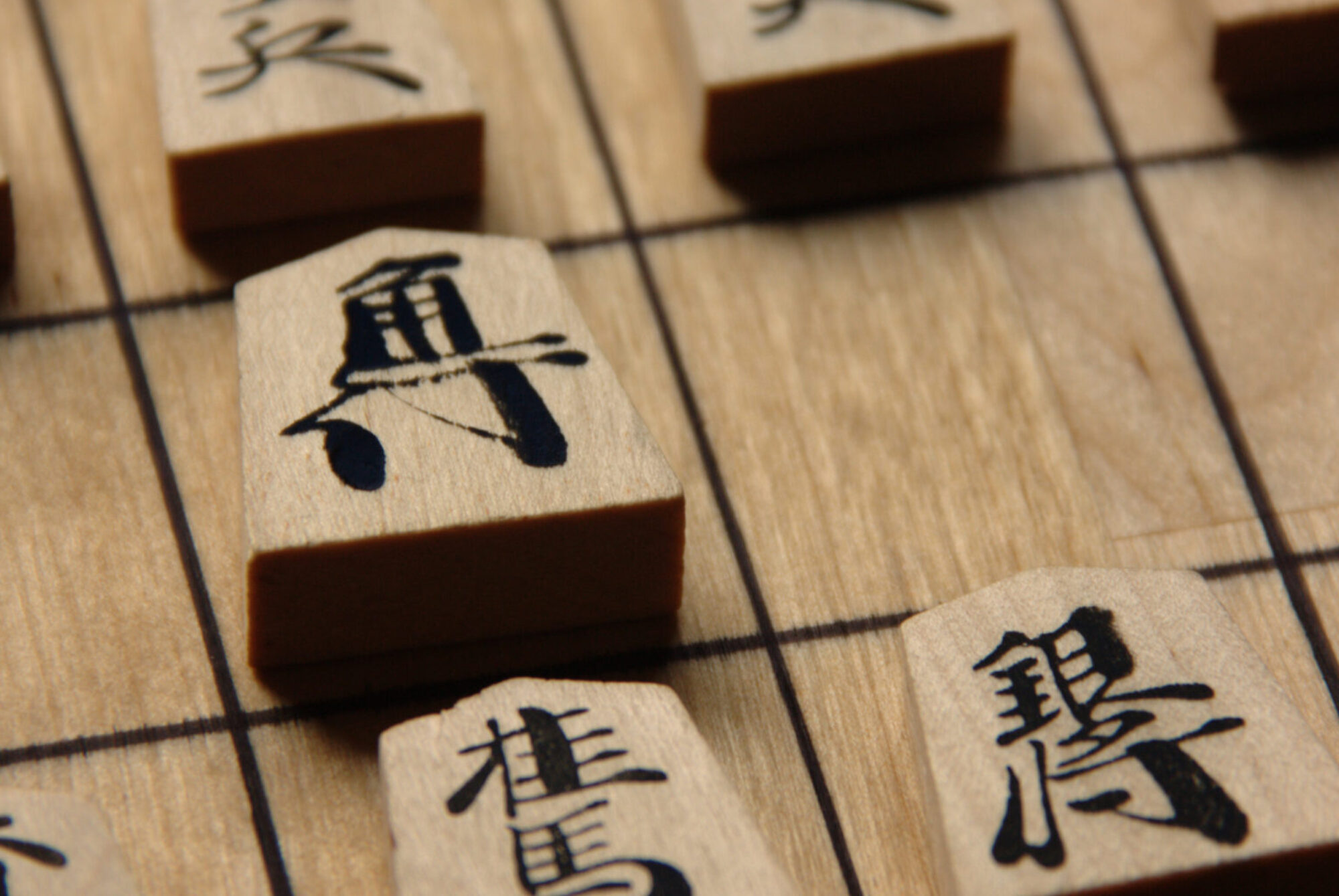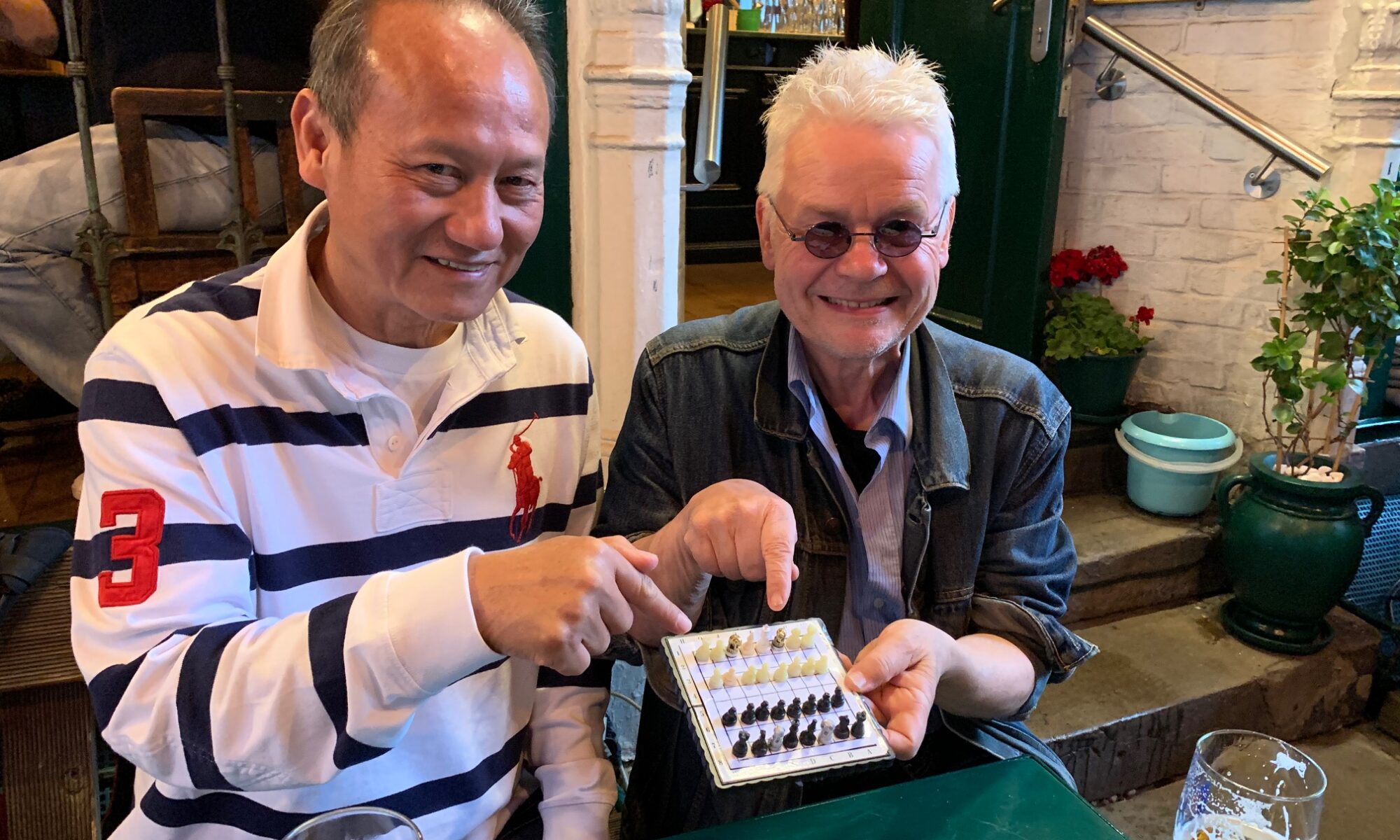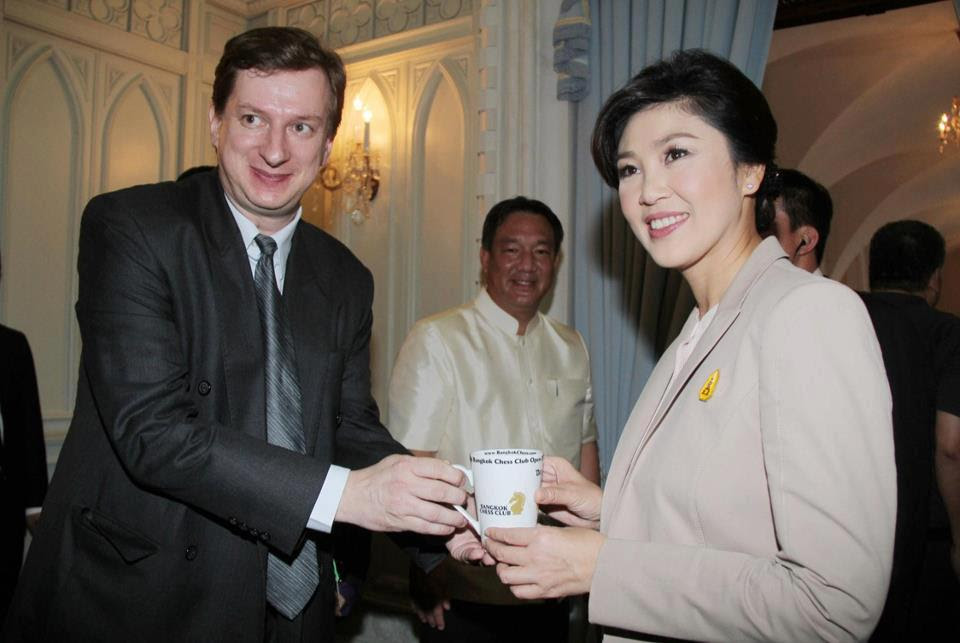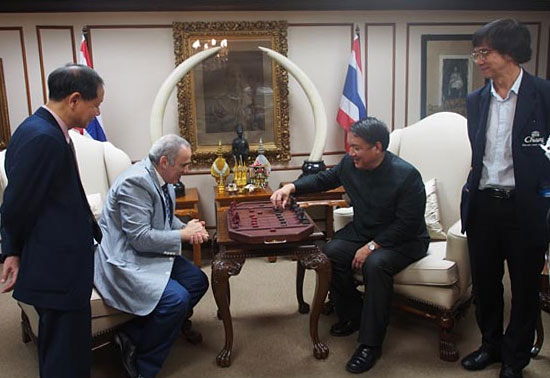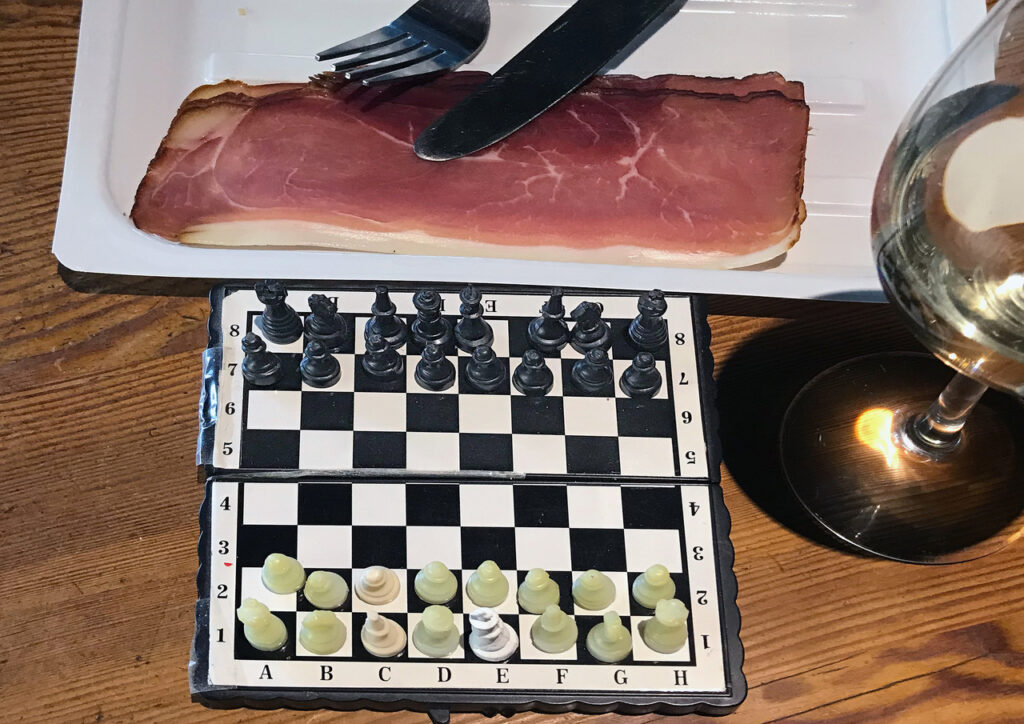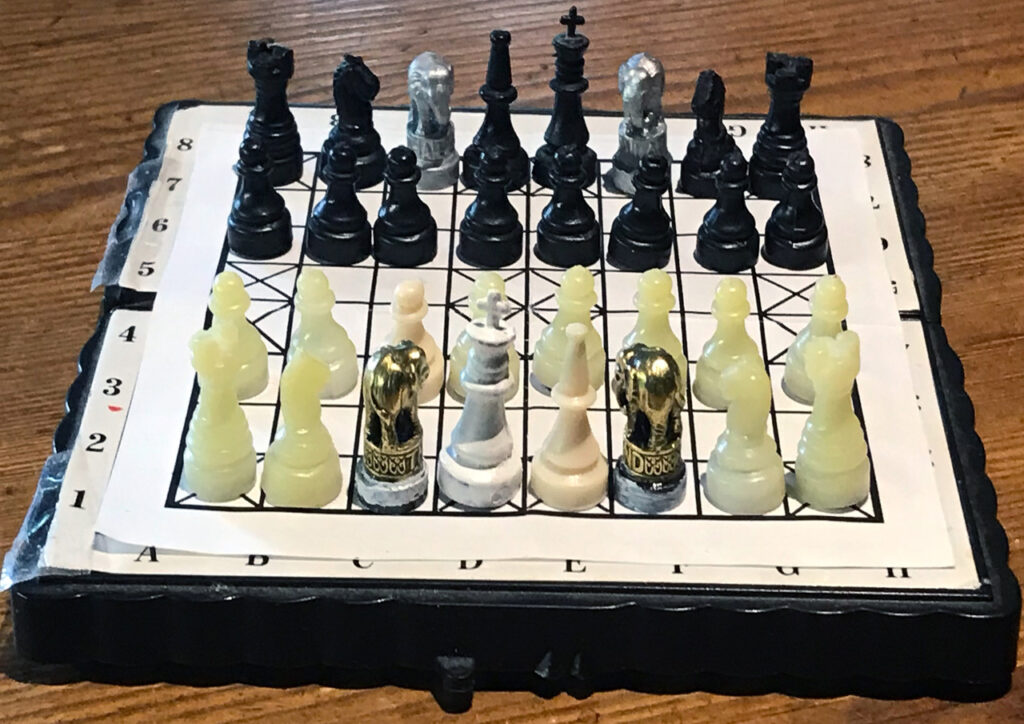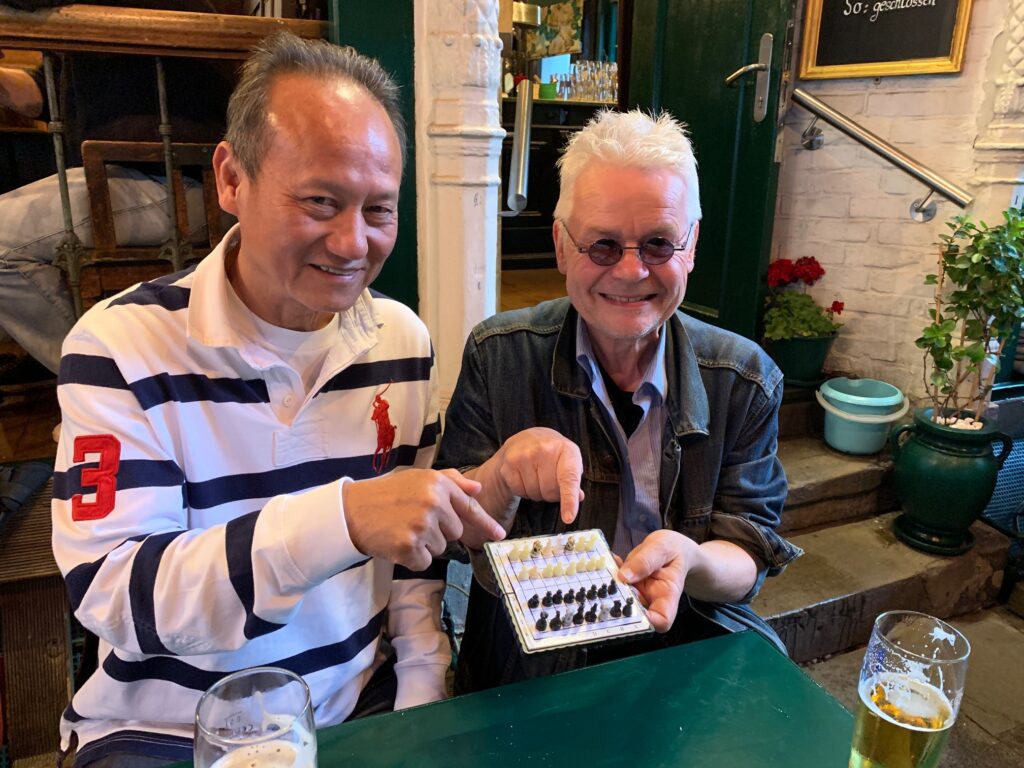Von Jürgen Woscidlo und Fabian Krahe
Thailand, das für sein vielfältige Küche, die abwechslungsreiche Natur und die kulturellen Schönheiten berühmt ist, hat auch schachlich – zusammen mit dem benachbarten Kambodscha – einen großen Schatz zu bieten: Makruk und Ouk Chaktrang!

Beide Schachvarianten sind sehr eng verwandt, daher weisen sie historisch, aber auch gegenwärtig noch viele Gemeinsamkeiten auf. Makruk wird in Thailand und Ouk Chaktrang in Kambodscha gespielt. Dass der Autor Pirapong Patumraat beide Varianten deshalb in einem Buch behandelt, ist sinnvoll. Patumraat verweilt allerdings nicht allein in den beiden Stammländern dieser Schavarianten, sondern spannt einen schachlichen Bogen über den halben Globus, indem er immer wieder Verbindungen zu anderen Schavarianten wie Shôgi oder FIDE-Schach und zu Größen unserer europäischen Schachvariante wie Capablanca, Lasker oder Kramnik herstellt. Auf einigen Seiten geht er zusammen mit dem bekannten Hamburger Schachjournalisten René Gralla auf die internationale Bedeutung des Makruk ein, wobei ein Abschnitt sogar tatsächlich dem Makruk in Deutschland gewidmet ist. Kaum verwunderlich, sind doch die beiden Hamburger Jürgen Woscidlo und René Gralla dem Autor, der Germanistik in Deutschland studiert hat und sich selbst den Vornamen Ludwig gab, seit langer Zeit freundschaftlich verbunden und setzen sich intensiv für die Förderung internationaler Schachvarianten – wie eben dem Makruk – in Deutschland ein. Seit 2011 gibt es an der Grundschule Grumbrechtstraße in Hamburg-Heimfeld eine Schach-AG in der auch Makruk unterrichtet wird.
Der erste Teil des Buches bietet einen historischen Überblick über die Entwicklung des Khmer Reiches von Angkor (802 bis 1431) und Thailands bzw. dessen Vorgängerreiche von Sukhothai und Ayutthaya. Damals war Südostasien wie Europa eine unruhige Region mit häufigen Kriegen. Den Status einer unruhigen Region hat es bis heute kaum ablegen können, bedrohen doch die Hegemoniebestrebungen der Volksrepublik China den brüchigen Frieden in der Region. Zurzeit des Reiches von Angkor war China schon einmal die unbestrittene Hegemonialmacht Ost- und Südostasiens. Damals übte China großen kulturellen Einfluss auf die Region aus und war mit Botschaftern vor Ort präsent. Die Herrscher von Angkor haben leider keine großen Bibliotheken hinterlassen. Sehr wohl aber Reliefs an Gebäudewänden und Tempelstelen mit Inschriften in Sanskrit. Auf einem dieser Reliefs ist auch ein Spiel dargestellt, dass eine Partie Ouk Chaktrang darstellen könnte. Ob das tatsächlich die älteste Darstellung der Khmervariante des Schachs ist, ist umstritten.

Im nächsten Abschnitt erklärt Patumraat die Regeln von Makruk und Ouk Chaktrang auf verständliche Weise, aber auch eindeutig an Menschen gerichtet, die bereits Erfahrung im FIDE-Schach haben. Da das gesamte Buch vollfarbig ist, sind auch die Makrukdiagramme zur Regelerklärung vollfarbig. Zur Darstellung der Figuren in den Diagrammen benutzt der Autor jedoch keine stilisierten Symbole, sondern Fotos von echten Figuren. Das mag vielleicht nicht jedermanns Geschmack sein, aber die grafische Aufbereitung ist tadellos und auch die Bebilderung des Buches sticht hervor. Obgleich der nächste Teil des Buches mit „Strategies and Tactics“ betitelt ist, widmet sich der Autor hier praktisch nur der Eröffnungstheorie, welches für die meisten Spieler aber ohnehin die theoretisch interessanteste Phase des Spiels sein dürfte. Viele taktische Manöver im Mittelspiel sollten für einen geübten Schachspieler, an den sich dieses Buch hauptsächlich richtet, ohnehin sofort Einsichtig sein. Abgerundet wird das Buch durch einige Mattaufgaben und einen Glossar, der allerdings etwas mehr Aufmerksamkeit in der Darstellung verdient hätte.

Abschließend lässt sich sagen, dass Pirapong Patumraat, der drei Dekaden lang einer der stärksten Makruk Spieler war, dem Leser auf 147 Seiten einen guten grundlegenden Einblick in die beiden faszinierenden südostasiatischen Mitglieder der Schachfamilie bietet. Auch zeigt er, dass beide Spiele wahrlich keine Museumsschätze sind. Nicht nur in ihren Heimatländern sind sie äußerst lebendig, sondern haben auch weltweit ihre Liebhaber gefunden. Zusätzlich gibt der Autor Tipps, mit welchen Computerprogrammen bzw. wo beide Spiele online gespielt werden können. In Zeiten der Corona-Pandemie nicht unwichtig.
Für alle, die nun Lust auf diese beiden Schachvarianten Südostasiens bekommen haben, hier noch zwei Videos unserer Hamburger Makrukenthusiasten Jürgen Woscidlo und René Gralla:
Pirapong Patumraat: Fundamental Makruk Ouk Chaktrang. Naimuang, Thailand: Pasit Publishing House. 148 Seiten. 28,13 Euro.
Bestellungen sind via E-Mail möglich:
vanpatumraatludwig@me.com
Zahlungsweg: Western Union Online: Pirapong Patrumraat, Bank Saving Account 059134991, Krinthai Bank (Überweisungsgebühren: ca. 4,00 Euro) + Luftfrachtkosten 10,80 Euro.
